Jan 27, 2025
Products
Supporting Super-Precise Processing: The Nano-Level Accuracy Super-Low Waving LM Guide
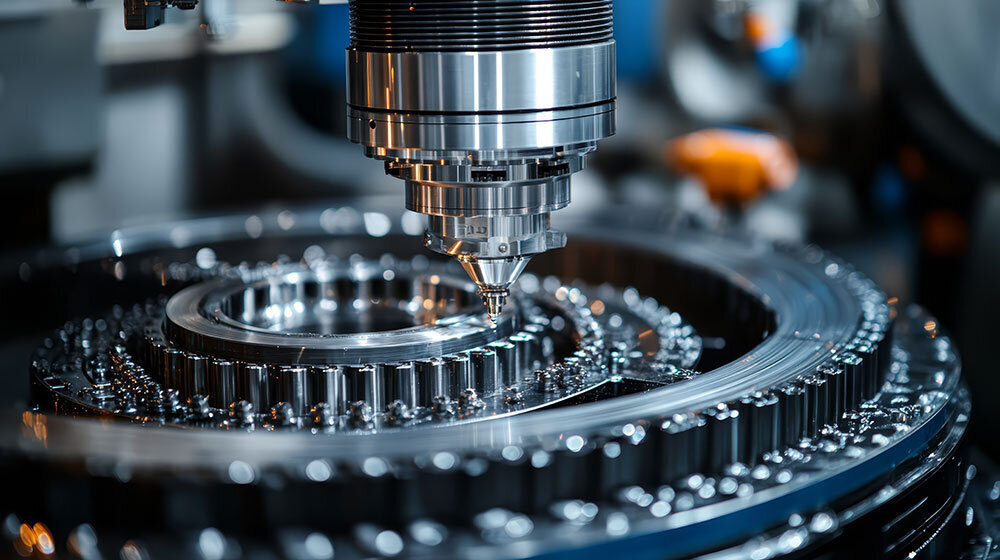
Have you ever heard the phrase “mother machine?” When we think of machines, a number of examples come to mind, from automobiles and airplanes to clocks, air conditioners, and robots. These machines are made up of countless component parts that have been fashioned from raw materials by processing machines known as machine tools. Put another way, machine tools produce the parts that give birth to all the machines in existence. And this is why they are sometimes referred to as “mother machines.”
A Technological Revolution Taking the High Accuracy of Machine Tools to the Next Level
Machine tools are a critical factor for creating all manner of machines. This is because it is impossible for the accuracy of any part to exceed that of the machine tool that processed it. We call this the copying principle. Essentially, as greater accuracy is required of machines, it becomes necessary to produce more highly accurate parts. This in turn requires machine tools with even greater accuracy than the component parts they need to produce. In the realm of machine tools, semiconductor and LCD manufacturing equipment, and precision measurement devices, machines that already have to be highly accurate must constantly be made even more so. And the demands for accuracy are shifting from the micrometer to the nanometer scale.Until now, nanometer-level accuracy has been achieved in many instances using static pressure guides. Recent years, however, have brought on a technological revolution for achieving such highly accurate motion with rolling guides as well. In this product blog, we'll look at the development of the nanometer-level accuracy of the Super-Low Waving LM Guide that THK has put forth to support ever more accurate machine tools.
The Barrier Posed by LM Guide Ball Recirculation
One of the challenges for achieving accurate motion at the nanometer-level is waving.
Even if rails and rail installation surfaces are given a highly accurate finish and offsets are used to attain highly accurate straightness, the relative positions of blocks and balls are constantly changing due to the circulation of said balls, and minute positional displacement arises as the number of balls bearing a load changes. This phenomenon of minute positional displacement is what we call waving, and this waving is one of the reasons that super-precise processing has had to rely on static pressure guides to provide linear motion.
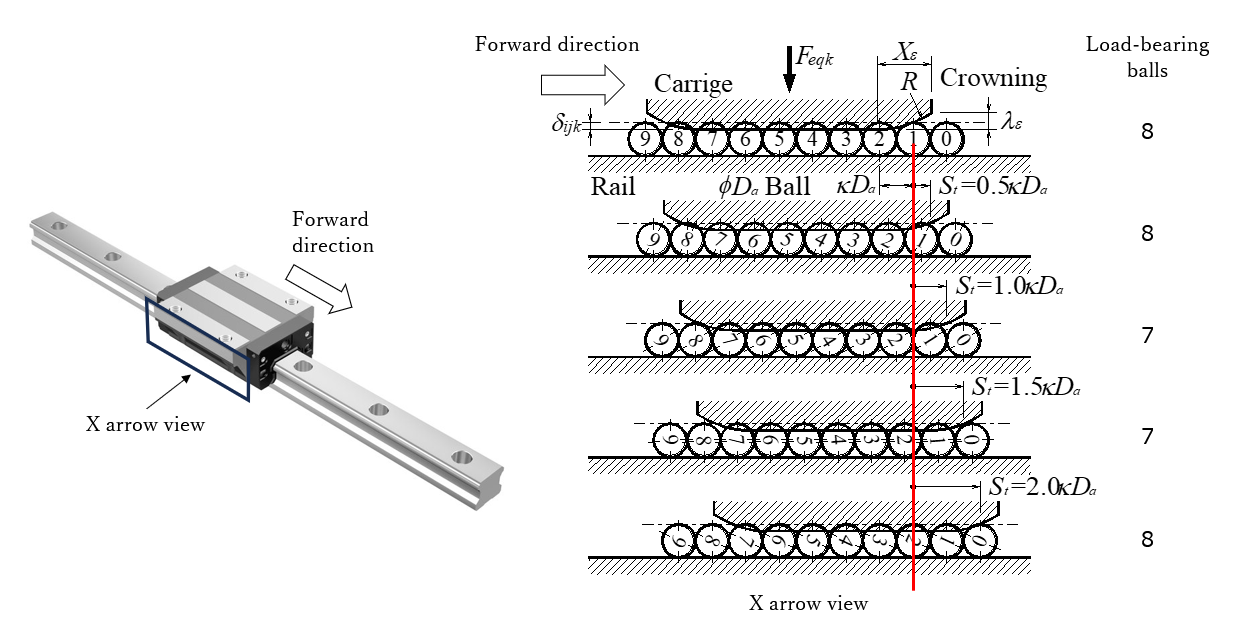

Scraping for Static Pressure Guides
Static pressure guides utilize pressurized oil and air to keep their moving parts and guide surfaces from making contact. Because these components don’t make contact, such guides experience little friction resistance and none of the waving problems that rolling guides do. As a result, static pressure guides are often utilized when a high degree of accuracy is required. While these guides are highly accurate, however, their guide surfaces also require extremely high machining accuracy. This kind of processing takes a lot of time. In some cases, an artisan finishes the machined surface by hand with a scraper. And when implemented on a machine, these guides require additional piping and constant maintenance.
A Breakthrough in Rolling Guides for Super-Precise Processing
Utilizing its original concepts and innovative technology, THK was the first company to apply rolling motion to linear motion units in the form of the Linear Motion (LM) Guide. In the course of our ongoing efforts in research and development, we made the following two breakthrough discoveries concerning the phenomenon of waving.
1. Reducing ball diameter increases the effective ball count.
2. The number of ball raceway grooves can be doubled from four to eight.
Waving is generated by minute displacement caused when the number of balls bearing a load changes. By increasing the number of load-bearing balls, this can be drastically reduced. The first win for the development process was reduced waving achieved by shrinking the ball diameter and increasing the load-bearing ball count. The second win came from using the freed-up space created by shrinking the ball diameter to double the number of raceway grooves from four to eight, thereby achieving a higher load rating. This idea increased the effective ball count even further, which reduced the load on each ball and created a new level of waving reduction. On top of that, this design also increased rigidity. This was, of course, fairly simple in theory, but achieving it required a high level of processing technology and an optimal design for the circulation component.
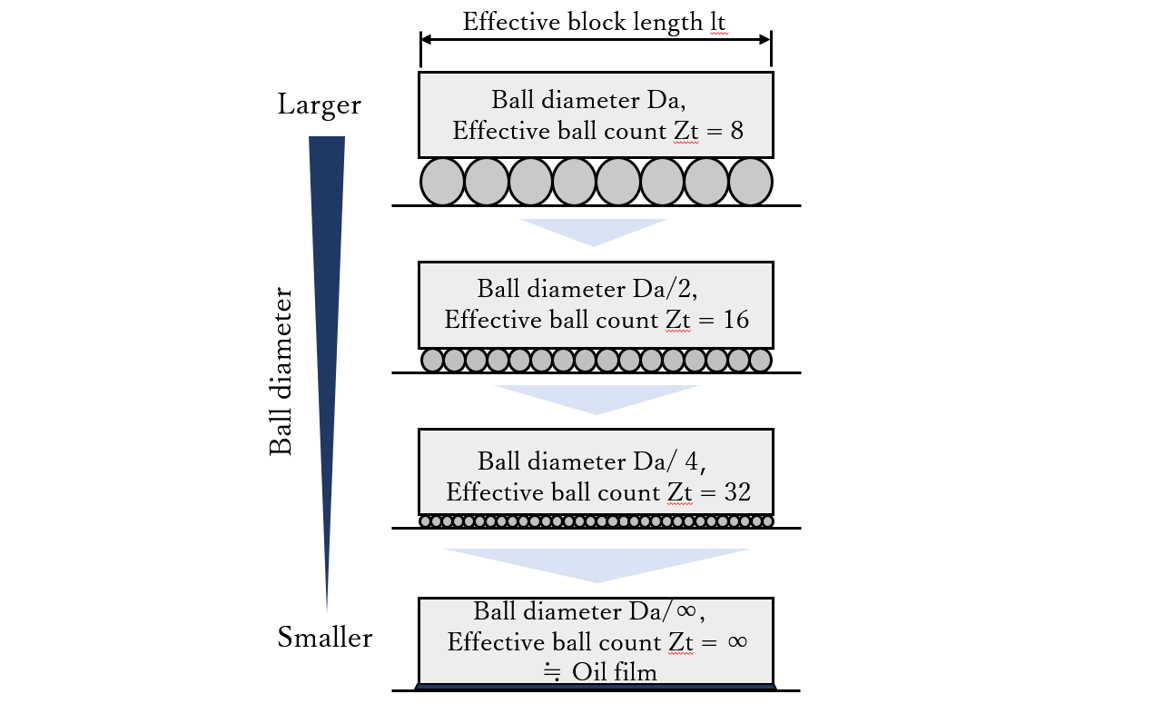
LM Guide Models SPR and SPS: Super-Low Waving That Rivals Static Pressure Guides
These original technologies were utilized in the development of the four-way equal load type Model SPS and the radial type Model SPR. Naturally, both make use of small-diameter balls and the eight-row structure. SPR and SPS blocks have also been lengthened to a practical length. This facilitates a greater load rating, reduces the load applied to any one ball, and infinitely minimizes changes to the number of load-bearing balls and the balance of forces acting on the block due to recirculation. As a result, enhanced rigidity can be expected in addition to super-low waving to rival that of static pressure guides. In addition, maintenance for these models is easier than what static pressure guides require.
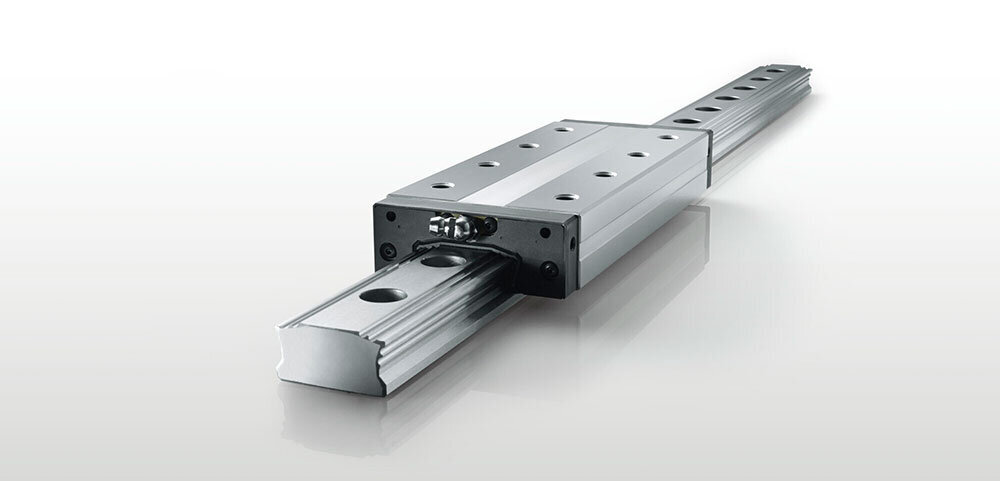
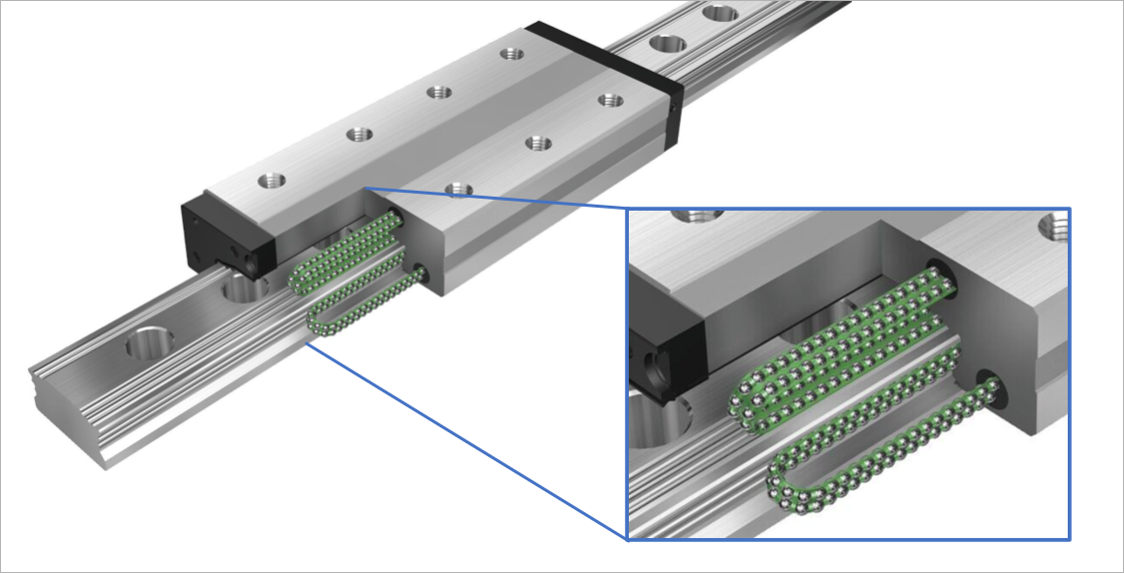
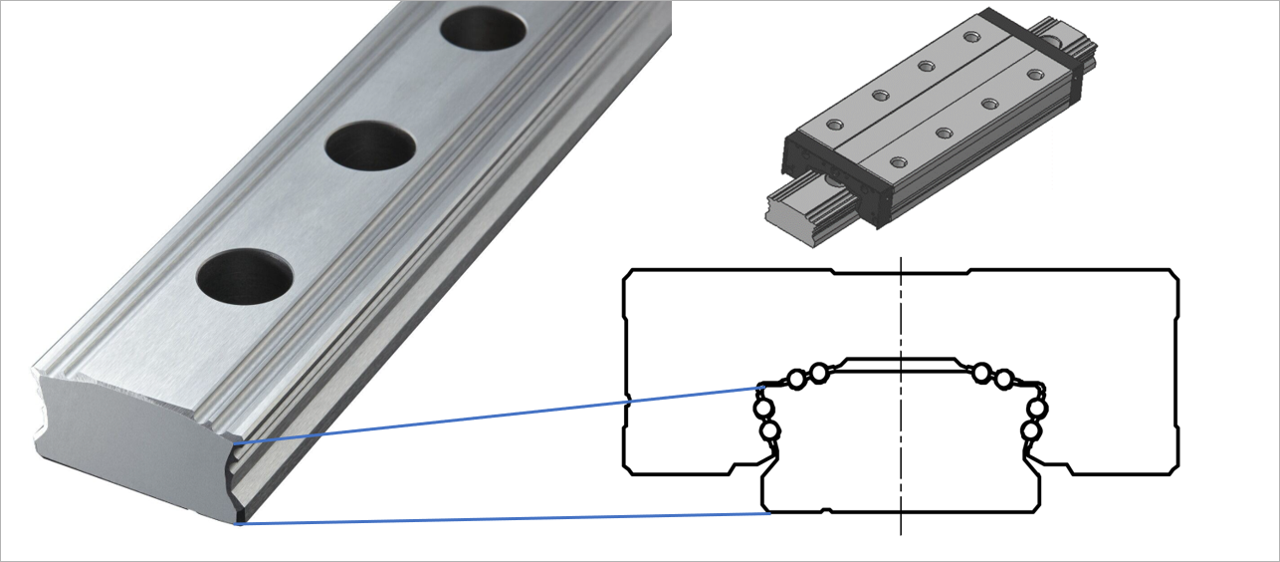
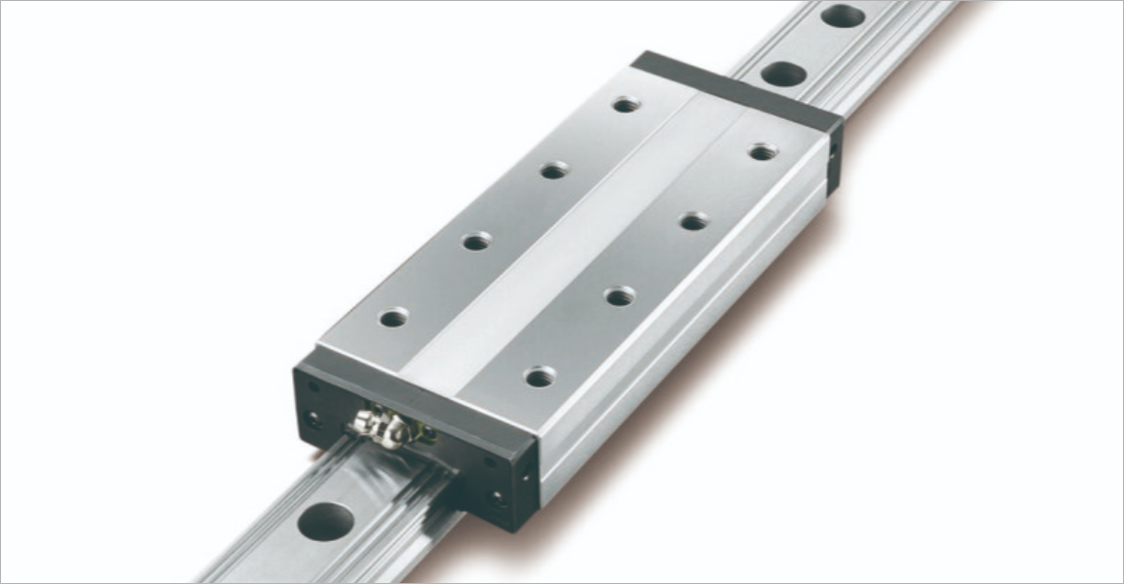
These blocks can hold a large number of balls, thereby reducing the load on each to achieve super-low waving and ultra-high rigidity.
Conditions
| Tested model | SPS25LR |
|---|---|
| Rail span | 250mm |
| Block span | 250mm |
| Measurement point | Upper 250 mm of the middle of the table |
| Measurement direction | Vertical and horizontal |
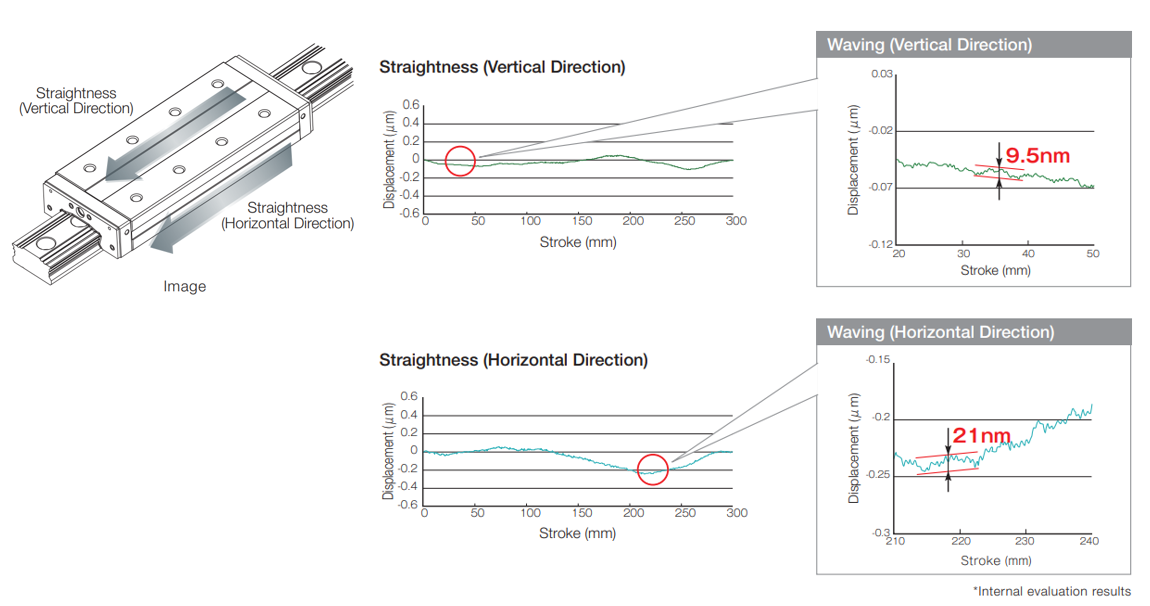
Expansion of Super-Low Waving Products and Increased Equipment Accuracy
The Model SPR and SPS, both rolling guides, have come to be considered viable options even in applications that previously utilized static pressure guides. Additionally, THK has followed the Model SPR/SPS with the development of the Model SPH, a Caged Ball LM Guide that has the same super-low waving property as well as ISO-compliant dimensions. Sales of the new model started on October 16, 2024. As a replacement for your existing rolling guides, it promises to increase the accuracy of all of your equipment. If you’re interested, don’t hesitate to contact us.
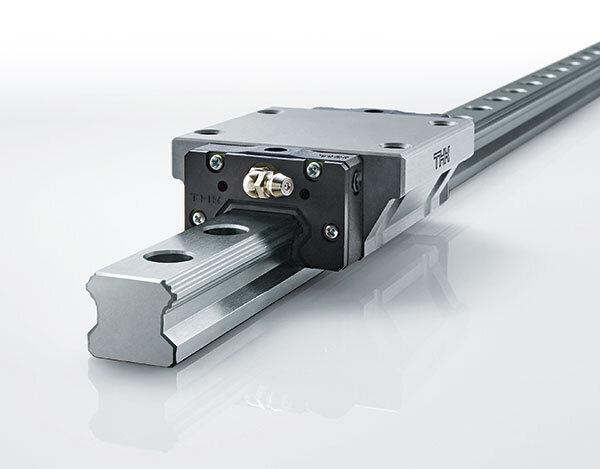
Waving Evaluation
| Legend | Model No. | Max. waving amplitude | Avg. waving amplitude |
|---|---|---|---|
 |
Existing products | 0.0634μm | 0.0505μm |
 |
SPH25 | 0.0120μm | 0.0088μm |
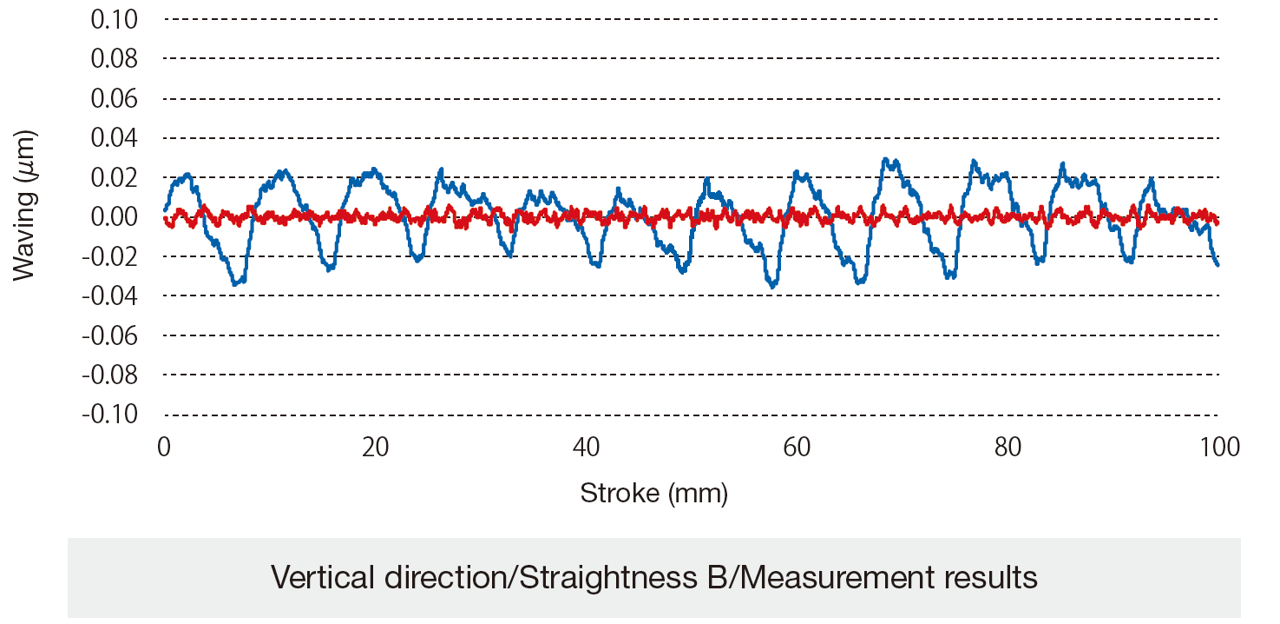
Super-Low Waving Caged Ball LM Guide Model SPS (radial type) (THK website)
Contact information
THK India Private Limited Bengaluru Branch
Unit No. 810 & 811, Brigade Deccan Heights, 8F, 42, 5th Mile, Tumkur Road (NH4), Yeshwanthpur Industrial Area, Phase 1, Yeshwanthpur, Bengaluru, Karnataka 560022, India
Tel : +91-9972773399
E-Mail:websales_enquiry@thkind.com